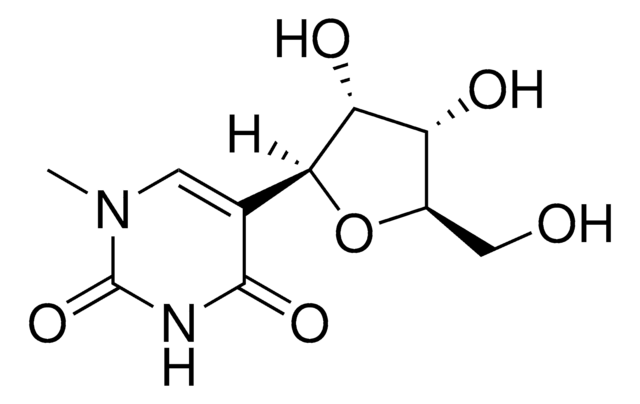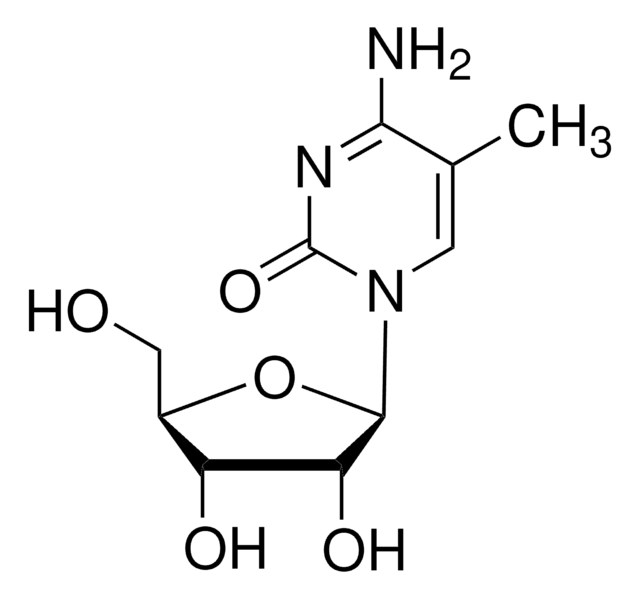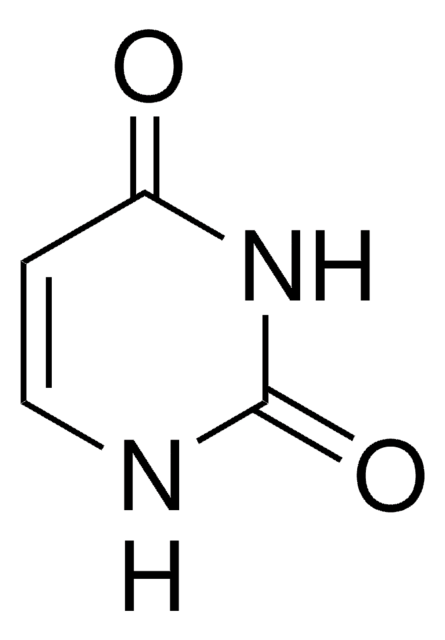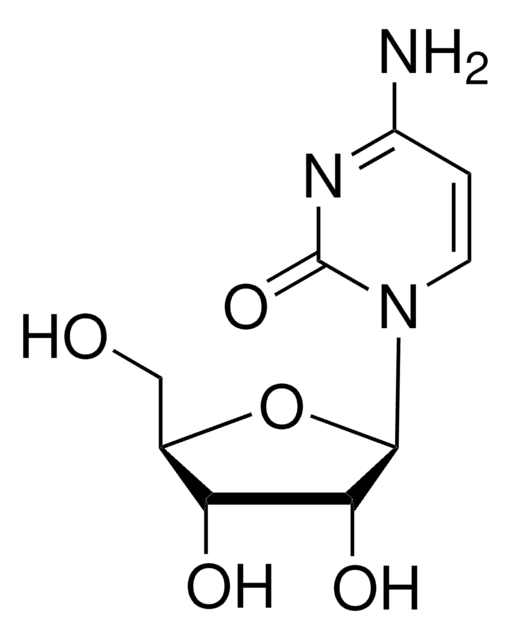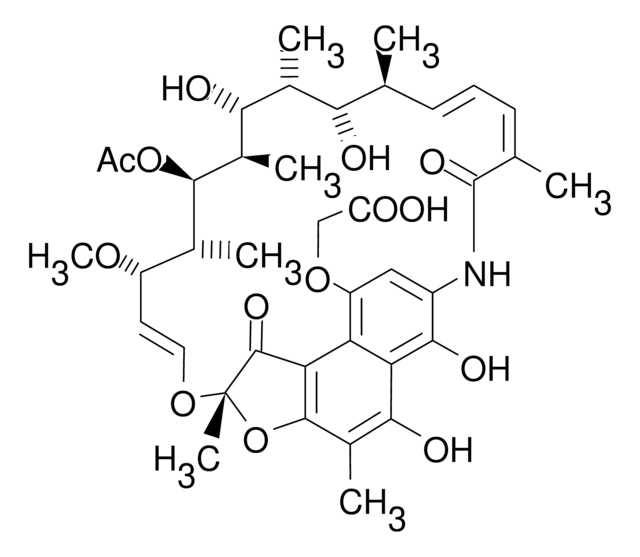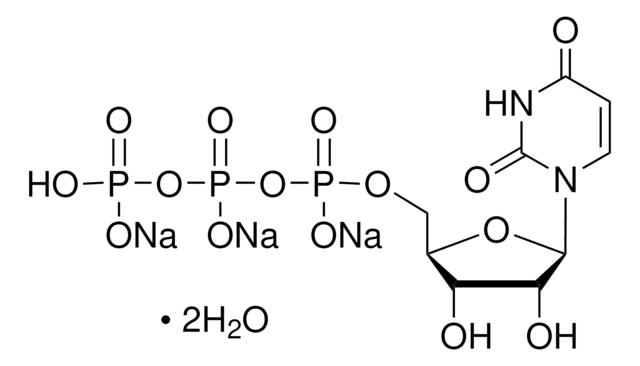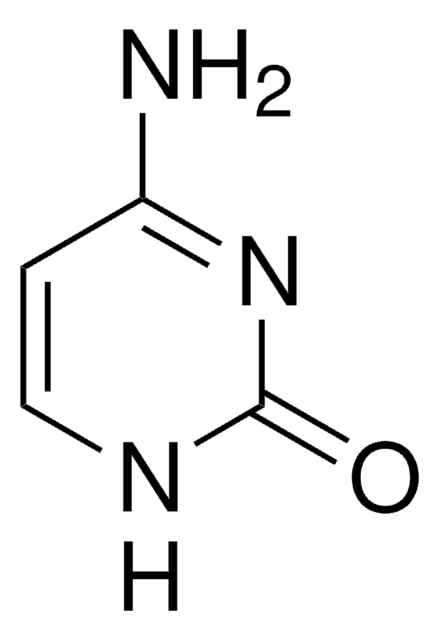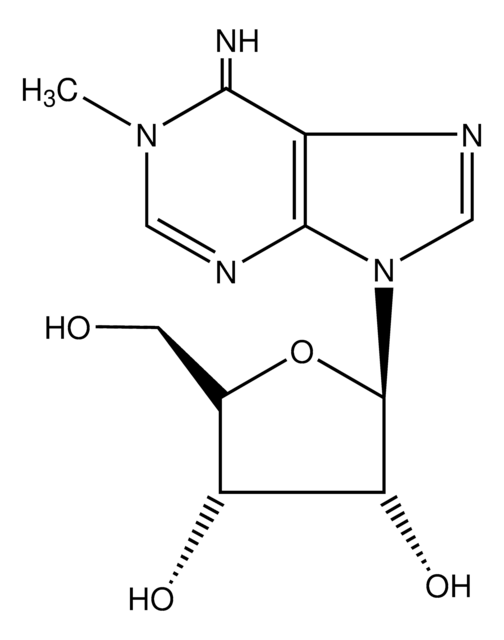SMB00912
Pseudouridine
≥98% (HPLC)
Synonym(e):
Pseudouridine, β-Pseudouridine, ψ-Uridine, 5-(β-D-Ribofuranosyl)uracil
About This Item
Empfohlene Produkte
Biologische Quelle
synthetic (chemical)
Qualitätsniveau
Assay
≥98% (HPLC)
Form
powder
Mol-Gew.
244.2
Farbe
white to off-white
mp (Schmelzpunkt)
222 °C ((432 °F ))
Löslichkeit
water: soluble
Lagertemp.
2-8°C
InChI
1S/C9H12N2O6/c12-2-4-5(13)6(14)7(17-4)3-1-10-9(16)11-8(3)15/h1,4-7,12-14H,2H2,(H2,10,11,15,16)/t4-,5-,6-,7+/m1/s1
InChIKey
PTJWIQPHWPFNBW-GBNDHIKLSA-N
Allgemeine Beschreibung
Anwendung
Leistungsmerkmale und Vorteile
- High-purity compound suitable for a wide variety of research applications
Sonstige Hinweise
Lagerklassenschlüssel
13 - Non Combustible Solids
WGK
WGK 3
Flammpunkt (°F)
Not applicable
Flammpunkt (°C)
Not applicable
Analysenzertifikate (COA)
Suchen Sie nach Analysenzertifikate (COA), indem Sie die Lot-/Chargennummer des Produkts eingeben. Lot- und Chargennummern sind auf dem Produktetikett hinter den Wörtern ‘Lot’ oder ‘Batch’ (Lot oder Charge) zu finden.
Besitzen Sie dieses Produkt bereits?
In der Dokumentenbibliothek finden Sie die Dokumentation zu den Produkten, die Sie kürzlich erworben haben.
Unser Team von Wissenschaftlern verfügt über Erfahrung in allen Forschungsbereichen einschließlich Life Science, Materialwissenschaften, chemischer Synthese, Chromatographie, Analytik und vielen mehr..
Setzen Sie sich mit dem technischen Dienst in Verbindung.
